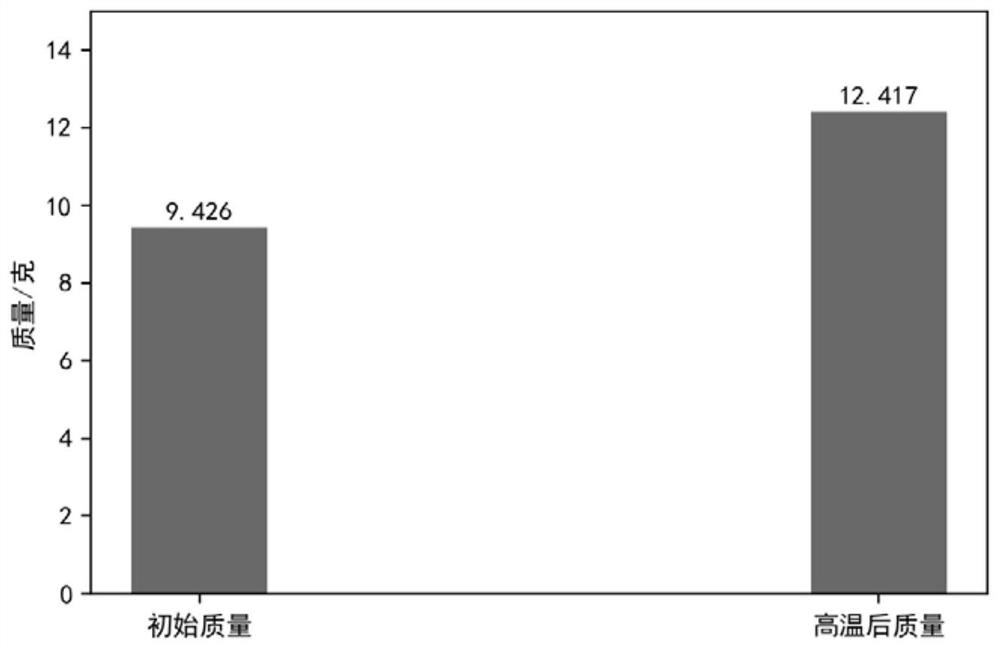Preparation method of silicon-carbon composite material
A technology for silicon carbon composite materials and coating materials, which is applied in the preparation of silicon carbon composite materials and the preparation field of carbon silicon composite materials, can solve the problems of poor conductivity, deterioration of negative electrode material performance, unstable SEI film, etc., and achieves high ratio The effect of capacity
- Summary
- Abstract
- Description
- Claims
- Application Information
AI Technical Summary
Problems solved by technology
Method used
Image
Examples
preparation example Construction
[0031] According to one embodiment of the present disclosure, it provides a method for preparing a silicon-carbon composite material, characterized in that the method includes:
[0032] The first step: mixing nano-silicon with pyrolytic carbon source or its aqueous solution, so as to coat the carbon source on the surface of nano-silicon to obtain the first pre-coating material;
[0033] The second step: heating the first cladding material to 500-650° C. for pre-carbonization to obtain the first cladding material;
[0034] The third step: repeating the first step and the second step to form a second cladding material;
[0035] The fourth step: Put the second cladding material into the middle of the high-temperature furnace for carbonization, add metallurgical silicon powder with a particle size of 1 μm to 1 mm at the inlet and outlet ends of the furnace as a reducing and protecting agent, and put the mixture in an inert Heating to 950-1000° C. under atmosphere for high-tempera...
Embodiment 1
[0043] Embodiment 1: Preparation of carbon-silicon composite material
[0044] A) Mix self-made nano-silicon and low-temperature pitch at a ratio of 2:3, heat to 120°C and stir in a high-speed disperser for 4 hours to obtain the first pre-coating material;
[0045] B) Then, heating the first cladding material to 500-650° C. under nitrogen to perform pre-carbonization;
[0046] C) Then mix the pre-carbonized product with pitch again at a ratio of 9:1, heat to 120°C and stir in a high-speed disperser for 2 hours to obtain the second coating material;
[0047] D) Put the second coating material into the middle of the high-temperature furnace for carbonization, add metallurgical silicon with a particle size of 500 μm as a reducing protective agent at the inlet and outlet ends of the furnace, and heat the mixture to 950 °C under an inert atmosphere To 1000 ℃ for high temperature carbonization for 4-8h, so as to obtain silicon carbon composite material.
Embodiment 2
[0048] Embodiment 2: Changes before and after high-temperature carbonization of reducing protective agent
[0049] The properties of metallurgical silicon powder in embodiment 1 before and after test are tested, figure 1 with figure 2 It shows the color and quality changes of metallurgical silicon powder before and after the test (a is before the test, b is after the test). Depend on figure 1 It can be seen that the color of metallurgical silicon changed from light black to dark black after the carbonization heating test. At the same time, by figure 2 It can be seen that the mass of metallurgical silicon increased from 9.426g to 12.417g after the carbonization heating test, and the increase of 2.91g was caused by the oxidation of part of silicon to silicon oxide.
PUM
| Property | Measurement | Unit |
|---|---|---|
| particle diameter | aaaaa | aaaaa |
| particle diameter | aaaaa | aaaaa |
| particle diameter | aaaaa | aaaaa |
Abstract
Description
Claims
Application Information
 Login to view more
Login to view more - R&D Engineer
- R&D Manager
- IP Professional
- Industry Leading Data Capabilities
- Powerful AI technology
- Patent DNA Extraction
Browse by: Latest US Patents, China's latest patents, Technical Efficacy Thesaurus, Application Domain, Technology Topic.
© 2024 PatSnap. All rights reserved.Legal|Privacy policy|Modern Slavery Act Transparency Statement|Sitemap



